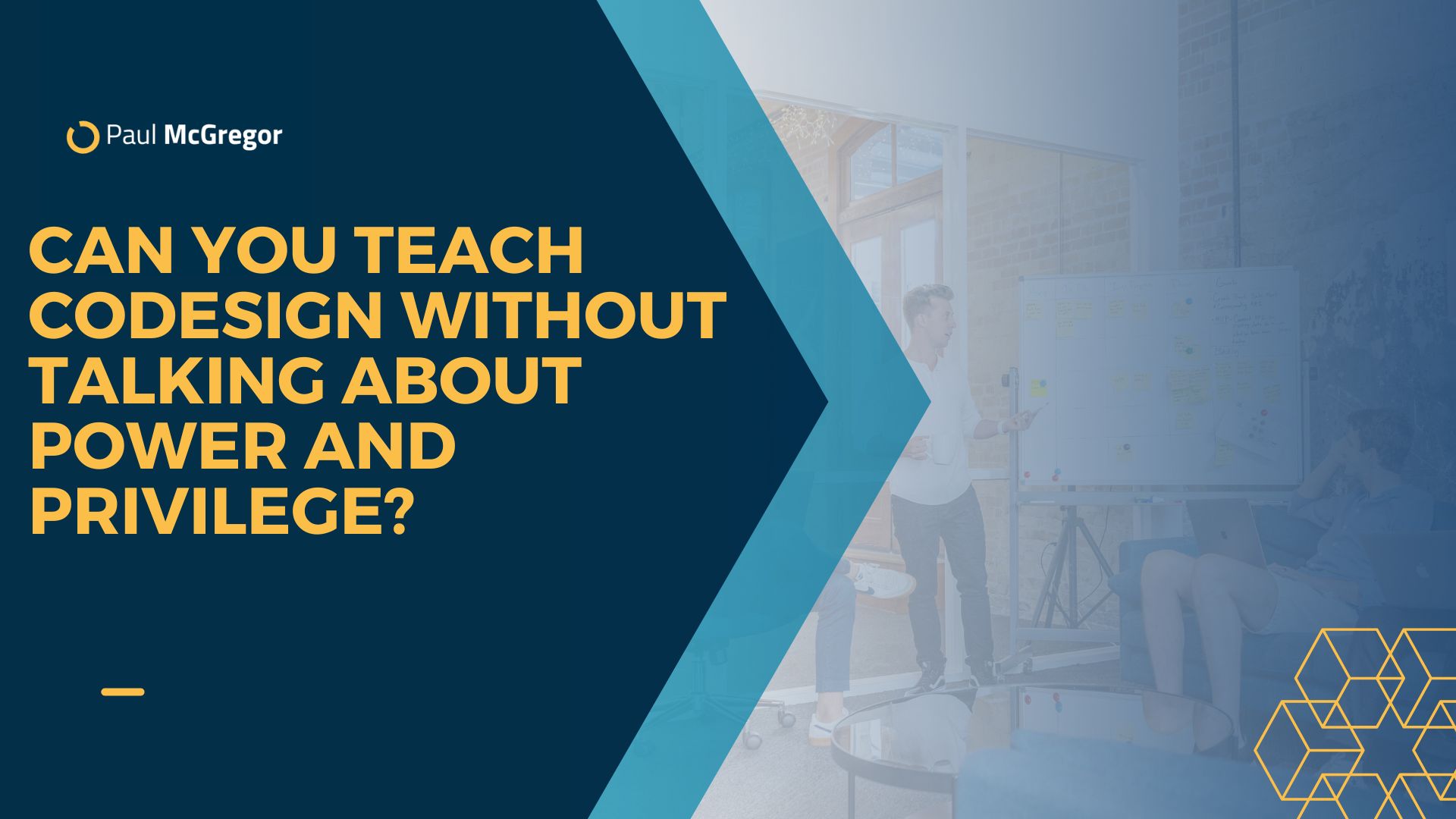Can you teach codesign without talking about power and privilege?

100 catch-ups in 100 days
Last month I set myself a slightly ridiculous mission to have 100 catch-ups in 100 days. (More on that here if you're interested.) I'm about 30 in so far.
As a result, I've been having catchups left, right and center. It's been a rich opportunity to hear about the challenges people are facing trying to shift how their organization serves community needs.
Banned from talking about power and privilege
In one call, somebody told me they had been asked to introduce codesign into their organization, but without talking about power and privilege.
"Can you do that?" they asked me. "Can you teach people about codesign without talking about power and privilege?"
The short answer is "no". Working with power and privilege is critical if you are to learn, make, and decide together.
In another call, a former client told me about challenging a project that was being touted as codesign but was just a consultation in fancy dress. The defense was that "there's a spectrum of codesign and this is a bit further down it."
Discomfort is a sign of progress
Both examples illustrate something deeper that has stood out from these catch-ups.
While many organizations are talking the talk, they are struggling to translate that into day-to-day practice. Codesign. Collective impact. Kaupapa-Māori design. Community-led development. Authentic engagement. We often go hunting for the "right" framework or the "best" toolkit - hoping it will make things easy. I know this because I've done it myself.
But often the fact that we're feeling uncomfortable - perhaps when talking about things like power and privilege for instance - indicates we're making real progress.
The real work is embracing the uncomfortable feeling and going deeper, rather than running away to the comfort of what's familiar.
It's not easy, but it's always worthwhile.